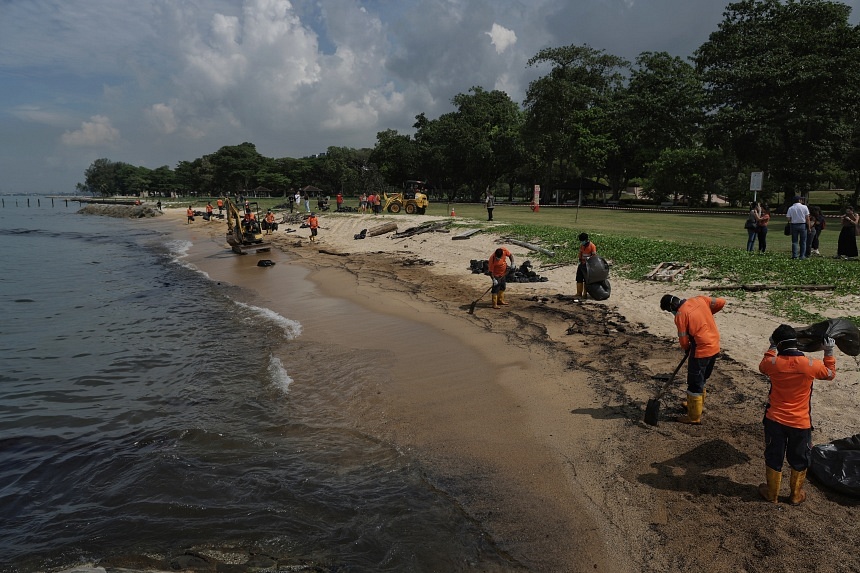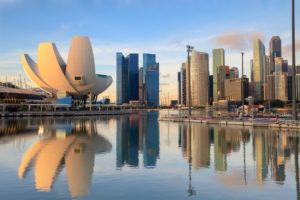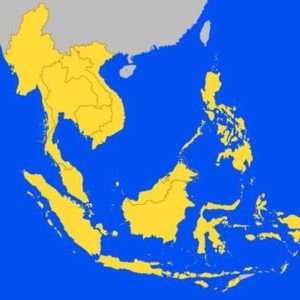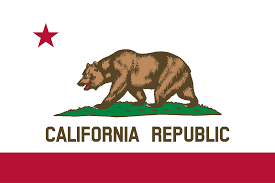ASEANEWS HEADLINE-ENVIRON | Singapore launches 15-month study to assess oil spill impact on marine biodiversity

Workers cleaning up the oil spill at the beach in East Coast Park on June 20. PHOTO: ST FILE
..
.

SINGAPORE – Researchers in Singapore will embark on a 15-month plan to monitor the impact of the June 14 oil spill on biodiversity in intertidal areas.
The national plan was announced by Minister for National Development Desmond Lee at a marine science workshop held at the National University of Singapore (NUS) on Oct 8.
As part of the monitoring effort, researchers will collect sediment samples from the intertidal zone in coastal areas affected by the oil spill, said Dr Tan Koh Siang, a principal research fellow at NUS Tropical Marine Science Institute (TMSI).
Dr Tan is part of the research team responsible for the post-oil spill monitoring effort, which will also include scientists from the National Parks Board (NParks), TMSI, St John’s Island National Marine Laboratory and the National Institute of Education.
The researchers will monitor affected sites, including East Coast Park, Labrador Nature Reserve and Sentosa, as well as beaches that were not directly affected by the oil spill, including the eastern beaches at Changi Beach Park and Coney Island Park, NParks added.
By retrieving sediment samples from areas affected and unaffected by the oil spill, researchers will be able to tease out the impact of the toxic slick on the tiny organisms in the sediment, such as crustaceans, worms and molluscs.
Dr Tan explained that the oil spill could smother organisms and kill them, as harmful chemicals from the oil may be released at high concentrations. At lower concentrations, these chemicals may affect their physiology – referring to how living organisms function.
“These (organisms) have not really been looked at, so we are interested to see what effects the oil has on these communities that are not visually obvious,” Dr Tan said.
To monitor the impact of the oil spill on marine biodiversity in intertidal areas, researchers will first obtain and sieve through sediment samples collected from the study sites.
Organisms retained on the sieves will be identified and counted to account for the abundance and diversity of different species of invertebrates – creatures without backbones, such as small crustaceans, worms and molluscs.
Dr Tan said: “These data will also form the basis for understanding their community structure, which can provide a baseline for future studies on environmental changes when called for.”
The post-oil spill monitoring plan was announced after the Netherlands-flagged dredger Vox Maxima on June 14 hit the stationary bunker vessel Marine Honour at Pasir Panjang Terminal, causing half of the low-sulphur fuel oil in one of Marine Honour’s tanks – totalling 400 tonnes – to leak into the sea.
The oil spread to biodiversity-rich areas along Singapore’s southern coast the next morning, with oil slicks reported in several areas of Singapore, including Sentosa, Labrador Nature Reserve, the Southern Islands, Marina South Pier and East Coast Park.
The oil continued to spread and was sighted off Changi on June 16.
Ads by:
..
The spill occurred during a bleaching event in early June, when about 40 per cent of hard corals in Singapore’s shallow waters of the Southern Islands turned white and weakened due to high sea-surface temperatures.
Intertidal zones are areas where the sea meets the land, which become exposed to air during low tides and are submerged during high tides.
Oil floats on water, so intertidal areas were directly exposed to the oil slick when the tide ebbed. This is why intertidal areas are the focus of the monitoring effort, Dr Tan said, when asked if Singapore’s coral reef habitats would also be studied under the nationally coordinated research effort.
In Singapore’s southern waters, coral reefs are located mainly in the subtidal zone, meaning they are permanently submerged, even at low tide.
Dr Jani Tanzil, facility director of St John’s Island National Marine Laboratory, said the research team will need to monitor the long-term impact from the oil spill and also look into the potential effects of other environmental disturbances. Specifically, the marine heatwave – which was also at its peak during the oil spill event – that has also affected important tropical marine ecosystems such as coral reefs.
Ads by:
..
One approach is tapping existing research and marine monitoring efforts such as the Marine Environment Sensing Network (MESN), a multi-institution project aiming to set up three research buoys that can deliver information about the condition of Singapore’s seawater, including on temperature, salinity, acidity level and nutrients.
Currently, only one buoy is deployed off St John’s Island, with plans to install the other two in coming months, said Dr Tanzil.
“So the MESN aims to obtain research-quality data that can let us better know what’s going on in our complex and dynamic marine environment. In-depth understanding of the processes driving our environmental changes will hopefully help tease out ecological impacts caused by the oil spill, compared to normal conditions and other disturbance events.”
Commenting on the significance of the 15-month plan, Mr Lee said: “While there’s been no significant impact on our marine biodiversity observed thus far, there could be a time lag between the incidence of the oil spill and its effect on biodiversity… We need to continue to monitor the impact, and the recovery, of our marine habitats.”
The data collected during this initial phase will be assessed before the team suggests possible mitigation and restoration measures to protect and restore biodiversity areas of importance in Singapore, Mr Lee added.
Members of the public who are interested in volunteering to help with monitoring efforts can visit NParks’ webpage for more information: https://www.nparks.gov.sg/biodiversity/community-in-nature-initiative/intertidal-watch
.


 Memento Maxima Digital Marketing
Memento Maxima Digital Marketing Ads by:
Ads by:







